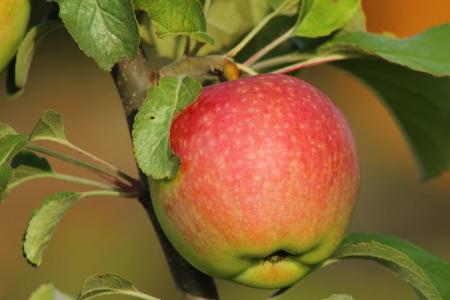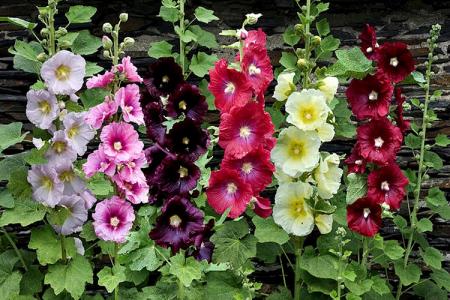
Tens and hundreds of varieties of milkweed are completely different from each other. But all of them are united by the characteristic milky sap, which is released if the plant is damaged. It is curious that the basic features of care remain the same. And we have already learned about the most important subtleties!
general information
Garden euphorbia most often means multiflorous euphorbia. It is a spherical shrub with a diameter of 50 cm to 1.5 m, depending on the variety. Among them are annual and perennial varieties.
Milkweed has an interesting leaf color. They can be not only green, but also bluish or gray-gray. The greenish-yellow flowers, at first glance, merge with the general background, but become brighter as they bloom. And there are a lot of them, because every young shoot ends with an inflorescence.
Milkweed leaves are elongated, twisted, oval, wavy - whatever. Basically, they reach a maximum of 8 cm in size. The leafy flowering shoots are like small individual bouquets.

Types of milkweed
Milkweed varieties include flowers, small trees and tall green bushes. Let's analyze the most popular and common varieties!
Edged spurge
An unpretentious annual with decorative teardrop-shaped leaves with a whitish border. It looks even better during flowering with its delicate bracts. In our latitudes, it is grown as an annual.

Almond spurge
It got its name from the characteristic shape of the leaves that resemble almonds. He has unusual scaly shoots and the same bizarre flowers, as if in a greenish hood.

Variegated spurge
An amazing plant on which leaves of various shapes and sizes grow. And it is also one of the most unpretentious varieties for decorating a site.

Mediterranean spurge
A tall shrub grows up to 1.5 m and effectively casts a bluish tint. Combined with its bizarre yellow-green inflorescences, this is one of the most original and decorative species.

Cypress spurge
Thin upright stems are covered with the same thin needle-like leaves. This spurge grows up to 50 cm, and also smells charming during flowering.

Multicolored spurge
This category is distinguished not only by the variety of shapes and sizes of leaves, but also by the beauty of the color palette. During flowering, yellow bracts change color to orange.

Milkweed care
The main rule of caring for any milkweed is to work with gloves. Especially if there are open wounds or other injuries on the hands. The rest of the plant is completely problem-free.
Temperature and lighting
Milkweed needs warmth and sun, and he is not at all afraid of drought or direct sunlight. The best temperature for active growth is from +20 degrees. But at the same time, winter-hardy varieties grow well before frost.

Watering
Euphorbia is the closest relative of common succulents. He is afraid of excess moisture, so he does not need to be watered unnecessarily. Only in dry periods, slightly moisten the topsoil. And then, only in spring and summer.

The soil
Any soil is suitable, but it is better to dilute too heavy soil with sand. When planting, dig up the earth with humus, and then be sure to mulch the seedlings. Do not forget about good drainage from expanded clay or broken brick in each hole.

Fertilizers and feeding
Euphorbia does not need additional mineral supplements. And an excess of nitrogen or organic matter can even lead to the development of fungus and rot.

Formation
Euphorbia grows rapidly, and because of this, the bush may lose its decorative effect. It literally falls apart before our eyes. Therefore, if you need to keep the shape, use special wire frames.

Wintering
At the end of September, perennial milkweed varieties are cut completely to zero. After that, sprinkle the plant with compost and leave it for the winter. It is not specifically necessary to mulch it - the root system will survive the frosts and so on.

Planting and breeding
Propagation of milkweed by seeds is a rather long and painstaking process. It is advisable to take material from female and male plants to obtain seeds in the future. And the seeds need to be scarified in advance - to erase the protective shell with sandpaper. In open ground, spurge is sown in spring or autumn, and seedlings can be removed in winter.
Young shoots about 12 cm long root perfectly immediately in moist soil. To do this, they need to be left in the greenhouse for about a month, and only then they can be transplanted to a permanent place. It is desirable that the distance between plants be at least 1 m.
In late spring, after the formation of strong young shoots, the vigorous milkweed bush can be divided and planted. The procedure is repeated no more than once every 2-3 years and only for adult plants over 3 years old. The separation of young growth is considered the most gentle and effective method of reproduction.

Pests and diseases of milkweed
Garden spurge is very fond of worms and nematodes. If pests have settled on leaves and shoots, insecticide treatment is sufficient. But a plant that is badly damaged by root nematodes is unlikely to recover, so it is better to destroy it as soon as possible and disinfect the soil.
With waterlogging and low temperatures, root rot develops. Alas, it is also not treated and the plant dies. But with fungal fusarium, which gradually spreads with dark spots along the ground part of the plant, you can fight with fungicides.
In the heat, euphorbia in the garden suffers from ring spot. It is a virus that insects can carry from other diseased plants. Chaotic yellow spots appear on the leaves, and such leaves need to be removed as soon as possible. And the plant should be sprayed with a medicinal preparation.

Euphorbia - photo
Just look how effective and different the spurge can be! Among such a variety, everyone can find their ideal variety.




























